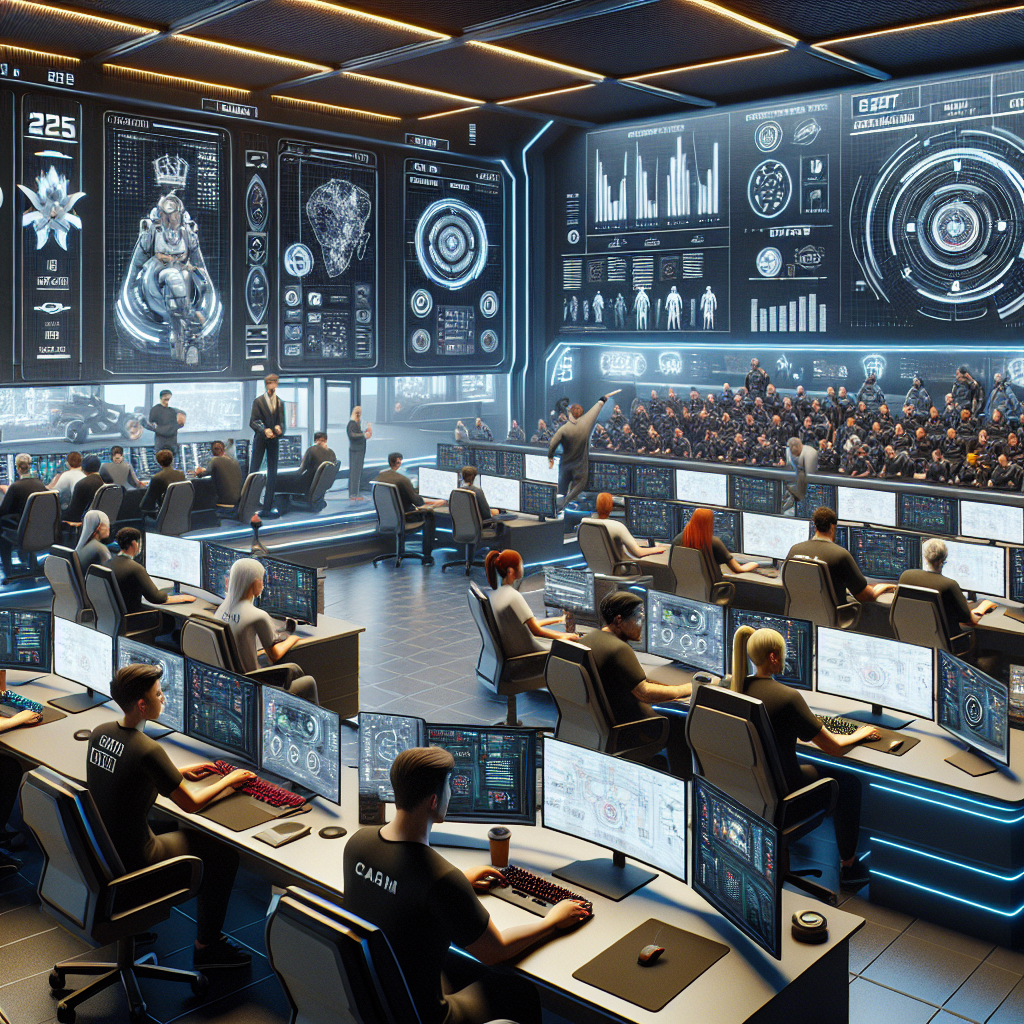Behind the Scenes: How 2025’s Esports Tournaments are Organized
As the landscape of competitive gaming continues to evolve, esports is rapidly establishing itself as a global powerhouse within the entertainment industry. By 2025, the scale and complexity of esports tournaments have transformed into a well-oiled machine that seamlessly integrates technology, management, and community engagement. But what goes on behind the scenes to orchestrate these colossal events? Here’s a closer look at the intricate gears that keep the world of esports spinning.
1. Tournament Planning and Development
Organizing an esports tournament begins long before the first match is played. At the heart of the process is a dedicated planning team, which includes event coordinators, marketing specialists, and production crews. Their responsibility is to define the tournament format, rules, prize pools, and overall structure.
a. Selecting Games and Genres
In 2025, the game selection process is heavier than ever. With numerous titles competing for player and audience attention, organizers must evaluate current trends, player communities, and the potential for engagement. Brands often prioritize popular games that resonate with their target demographics—titles like "League of Legends," "Valorant," and "Dota 2" often take center stage.
b. Prize Pools and Sponsorships
Securing sponsorship deals and establishing prize pools are critical components of any esports tournament. Organizers engage with brands that align with their values and who see the potential for marketing and brand visibility. By 2025, sponsors are not just looking at traditional advertising but also innovative opportunities to engage with fans through interactive experiences and in-game branding.
2. Venue Selection and Logistics
The choice of venue has a profound impact on an esports tournament’s success. Organizers must consider factors such as location, seating capacity, technology capabilities, and audience experience.
a. Physical vs. Online Events
While some tournaments are held in large stadiums or arenas, the popularity of hybrid and fully online events has also surged. 2025 sees a significant amalgamation of in-person and virtual experiences, leveraging platforms that allow fans to tune in from anywhere in the world. Hybrid formats help in minimizing costs while maximizing audience reach.
b. Technical Setup
A successful esports event relies on state-of-the-art technology, including high-speed internet, broadcasting equipment, and gaming hardware. Many tournaments in 2025 utilize advanced software for streaming, ensuring seamless transitions between games, commentary, and audience interaction. Technical rehearsals are vital, allowing teams to troubleshoot any potential issues before the event goes live.
3. Player Engagement and Team Coordination
Engaging players and ensuring they are well informed is essential for a successful tournament. Team managers and players must navigate a plethora of schedules, rules, and logistics.
a. Registration and Qualifiers
In preparation for the main event, many tournaments host qualifiers, which can take place weeks or months in advance. These events often employ a combination of online and in-person formats, drawing teams from various regions to compete for limited spots in the tournament.
b. Player Amenities
Today’s esports players are treated like stars, with organizers providing a range of amenities, including travel arrangements, accommodations, and dedicated lounges at event venues. Additionally, player health is prioritized through wellness programs and mental health support, reflecting the changing attitudes towards player well-being in the competitive scene.
4. Audience Experience and Engagement
An unforgettable tournament experience bridges the gap between players and fans. Engaging the audience—both online and offline—is crucial in maintaining interest and building a community around esports.
a. Content Creation and Broadcasting
In 2025, live streaming has reached new heights, with significant investments in production quality and accessibility. Broadcasters utilize multiple camera angles, augmented reality features, and interactive elements to enhance viewer experience. The integration of social media plays an essential role, with real-time audience participation through polls, Q&As, and online fandom events.
b. Merchandising and Fan Interaction
Fan engagement takes on new dimensions with exclusive merchandising, meet-and-greet sessions, and interactive experiences that cater to the audience’s love for their favorite teams and players. Successful tournaments leverage the excitement surrounding events with dedicated merchandise drops and collectible items to boost revenue and community loyalty.
5. Post-Tournament Analysis and Feedback
Once the dust settles and the champions are crowned, the work is far from over. Organizers conduct thorough post-event analyses to gather feedback from players, sponsors, and viewers. This information is invaluable for improving future tournaments and ensuring they meet the needs of all stakeholders involved.
a. Metrics and Performance
In 2025, data analytics have become essential in measuring tournament success. From viewer ratings to player performance, analyzing metrics allows organizers to refine their strategies moving forward.
b. Continued Community Engagement
Maintaining engagement with the community post-event fosters a loyal fan base and encourages growth in future events. Follow-up content, highlights, and interviews help sustain the excitement and keep the conversation alive among players and fans alike.
Conclusion
As esports tournaments continue to grow and evolve, the behind-the-scenes orchestration reveals a complex interplay of strategy, technology, and community engagement. With a well-structured organization supported by innovative solutions, the tournaments of 2025 not only showcase the pinnacle of competitive gaming but also create profound experiences that resonate with fans around the globe. The future of esports is bright, and its backstage operations are a testament to the passion and dedication driving this dynamic industry forward.




